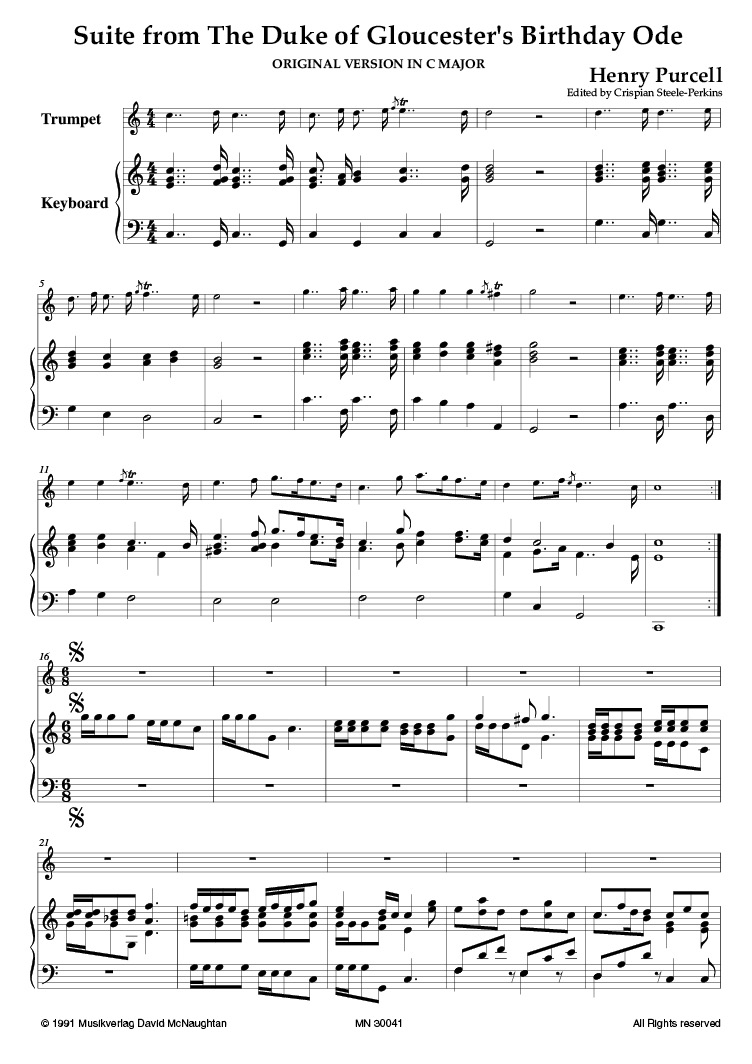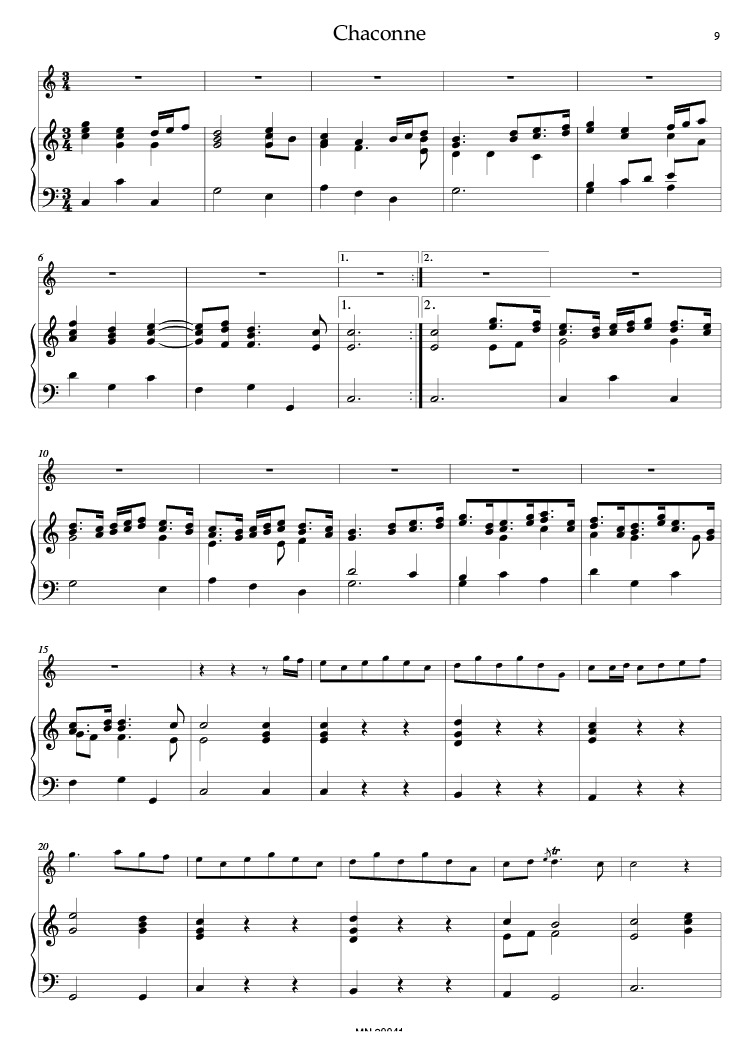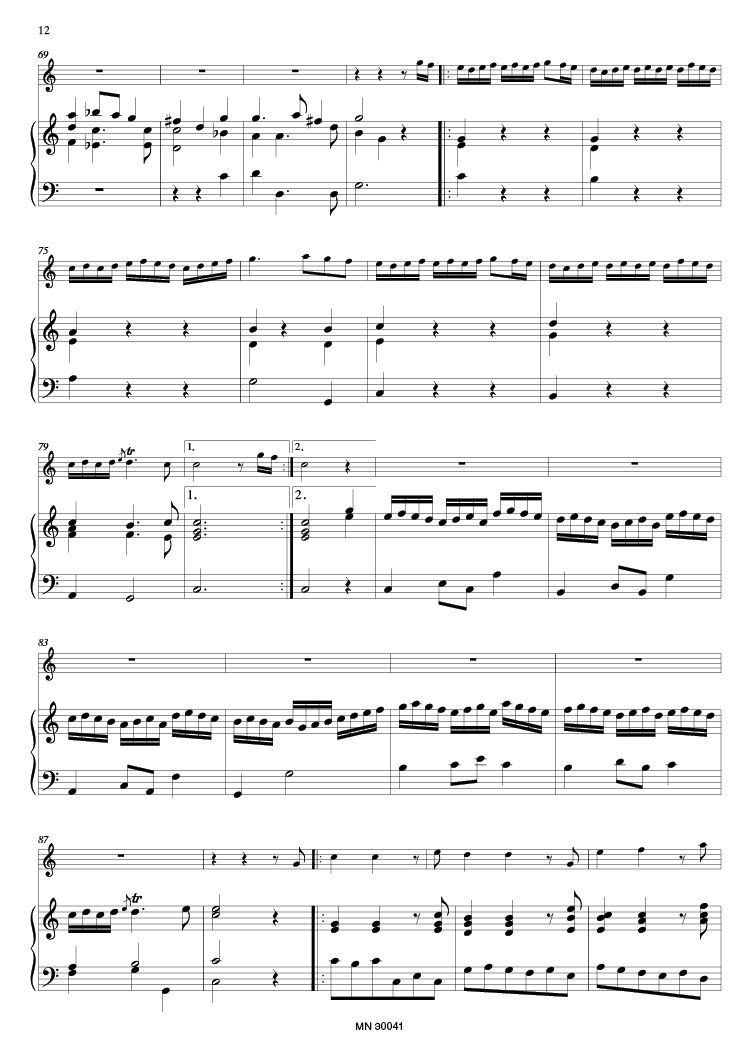
Purcell Suite from "The Duke of Glouceser's Birthday Ode"
Instrumentation: Trumpet, Strings, B.c.Difficulty (I-VI): IV
Parts:
MN 30040: Trumpet in C, Strings 4324, B. c.
MN 30041: Trumpet in C and Keyboard
MN 30043: Trumpet in Bb and Keyboard
MN 30044: Trumpet in Bb and Keyboard
Series: Music for the King's Trumpeter
Editor: Crispian Steele-Perkins
Though much is known of Purcell's musical achievements, one may only speculate on his personality, and those human characteristics which one may assume from dle broad scope of his activities reveal a colourful and attractive individual. He was born in the late summer or autumn of 1659 into a large family that lived near the royal palace of Whitehall (destroyed by fire in 1698), where his father and uncle were gentleman musicians to the king and his two elder brothers (he had six brothers and two sisters) later served as ushers. He and his younger brother Daniel were educated among the 12 boy choristers (Children) of the Chapel Royal, where they were taught to read and write English and Latin and also learnt violin, lute, keyboard and composition.
Charles II encouraged his prodigies to produce monthly compositions in the 'brisk and airy' French manner, which he preferred to the fantasias ('fancies') of English tradition; at this time foreign instrumentalists were also introducing the new Italian Baroque style to London. Purcell learnt and mixed with the most eminent musicians, several of whom had travelled widely throughout Europe before migrating to London's tolerant and cosmopolitan atmosphere.
Though a prolific and respected composer, it was not until after the 1689 "Bloodless" revolution, in the reign of William and Mary, that Purcell's creative talents reached a broader theatrical public in the sensational spectacles of Restoration Drama often extravagant presentations, even by twentieth century standards, and frequently somewhat coarse. His music has often suffered from "retrospective" scholarship, which has imposed Handelian formulae upon what is a simple, direct bridge between Renaissance and High Baroque. The music has a distinctive elegance all of its own, which does not benefit from either over-refinement or over-embellishment. Purcell's many Trumpet Airs, Overtures and Sonatas should be interpreted in a "light and airy" style with the instrument integrated with other orchestral textures. John Shore, Purcell's close friend and colleague, produced a sound in these works which was said to resemble the "chirrupung" of birdsong; his pupils in the larger Handelian orchestras were often required to play in a less vocal but more martial style, often in the company of timpani (which Purcell used infrequently but with great subtlety). Drum parts have been added in later times, nearly always inappropriately).
Like Mozart nearly a century later, Purcell's career ended abruptly and all too soon with his premature death at the age of 36. Hawkins relates the anecdote that Purcell died of pneumonia after being locked out by his wife following an evening of drunken revelry; however, the evidence is that the weather was particularly fine and dry that October and November, and that Purcell died of tuberculosis. The circumstances of the composition of the present Ode are to be found in the article on John Shore under More about the Musik for the King's Trumpeter Series (above).
Some covers have differing designs.



